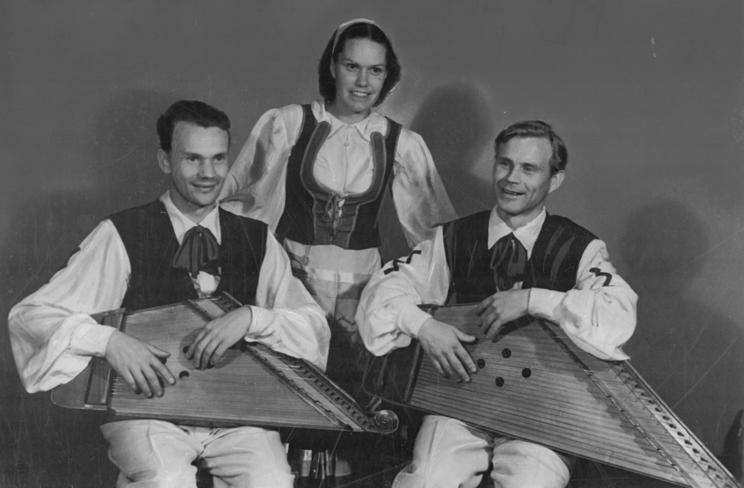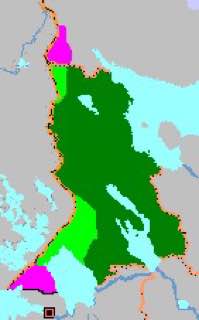Ah, the Karelo-Finnish Soviet Socialist Republic (Karelo-Finnish SSR), one of the Soviet Union’s many intriguing, if somewhat obscure, socialist experiments. Established in 1940 and dissolved in 1956, this short-lived republic was a curious blend of Russian and Finnish cultures, wrapped in the classic Soviet style of the mid-20th century.
But what makes the Karelo-Finnish SSR so amusingly unique in the annals of Soviet history? Let’s dive into the whimsical world of this vanished republic and explore its quirky legacy.
The Origins: A Soviet Fantasy of Finnic Proportions
The story of the Karelo-Finnish SSR begins with the Winter War of 1939-1940, when the Soviet Union decided to “liberate” Finland from the oppressive clutches of, well, Finland. After a less-than-stellar military campaign that saw the Soviets facing off against fiercely determined Finnish ski troops, a peace treaty was signed, and the USSR carved off a chunk of Finnish territory, creating the Karelo-Finnish SSR. This new republic was supposed to be a beacon of Soviet socialism for the Finnish people, offering them the chance to bask in the glorious rays of Soviet ideology.

However, there was a slight problem: most Finns didn’t really want to be part of the Soviet Union. The newly established Karelo-Finnish SSR was thus populated largely by Karelians (a Finnic people closely related to the Finns) and a smattering of Russians. The Soviet authorities went ahead anyway, envisioning this new republic as a model socialist state, replete with Finnish-Soviet harmony.
The Capital of Petrozavodsk: A City of Many Names
Petrozavodsk, the capital of the Karelo-Finnish SSR, is a place that exemplifies the whimsical nature of this republic. The name itself, which translates to “Peter’s Factory,” harks back to its founding by Peter the Great in the early 18th century. Over the years, the city has gone through more name changes than a Soviet leader’s title.
During the Soviet era, Petrozavodsk was spruced up with the usual socialist trappings: grandiose statues, wide boulevards, and buildings that screamed, “Yes, we are definitely a capital city!” The city became a showcase of Soviet multiculturalism, with signs in both Russian and Finnish (even if the Finnish population was pretty sparse).

A Brief Burst of Finnic Pride
For a fleeting moment, the Karelo-Finnish SSR seemed poised to become a hub of Finnic culture within the Soviet Union. The government promoted Finnish language education, and Finnish literature was translated and published. There was even talk of encouraging Finnish immigration to the republic, although this idea never really gained traction—perhaps because few Finns were eager to trade their saunas and lakes for the joys of Soviet central planning.
The cultural push was more about optics than substance, with the Soviet authorities keen to show the world (and particularly Finland) that the USSR was a multicultural utopia where Finns could live in peace, prosperity, and endless five-year plans.
The Downfall: From SSR to ASSR
As with many Soviet experiments, the Karelo-Finnish SSR’s grand vision didn’t quite pan out. By the mid-1950s, the republic was struggling with economic problems, largely due to its remote location and lack of resources. The dream of a vibrant, Finnic socialist state began to fade, replaced by a more mundane reality of administrative challenges and economic woes.
In 1956, during the de-Stalinization period, the Soviet leadership decided to downgrade the Karelo-Finnish SSR from a full Soviet Socialist Republic to an Autonomous Soviet Socialist Republic (ASSR) within the Russian Soviet Federative Socialist Republic (RSFSR). This demotion essentially meant that the Karelo-Finnish SSR lost its status as a distinct Soviet republic and became just another part of the RSFSR. The Finnish language gradually lost its official status, and the republic’s name was changed back to the Karelian ASSR.
The Legacy: A Quirky Footnote in History
Today, the Karelo-Finnish SSR is a quirky footnote in the vast annals of Soviet history—a brief experiment in Finnic socialism that left behind a legacy of curious cultural artifacts and a lot of slightly confused descendants. The republic’s dissolution didn’t erase the unique cultural blend that had developed; rather, it added a layer of historical oddity to an already fascinating region.
Visitors to Petrozavodsk and the surrounding areas can still find traces of this Soviet-era experiment, from bilingual street signs to statues of Finnish writers who never actually lived there. The region’s rich blend of Russian and Karelian culture, sprinkled with a dash of Finnish influence, makes it a fascinating destination for history buffs and curious travelers alike.
So, if you ever find yourself in the vicinity of Lake Onega, take a moment to ponder the Karelo-Finnish SSR—a Soviet republic that was, then wasn’t, and now exists only in the colorful pages of history books and the collective memory of those who relish a good historical oddity. After all, where else can you find a Soviet republic with a Finnish accent?
And can you visit this modern republic with YPT? Of course you can, although do not have a group tour planned, yet anyway.





